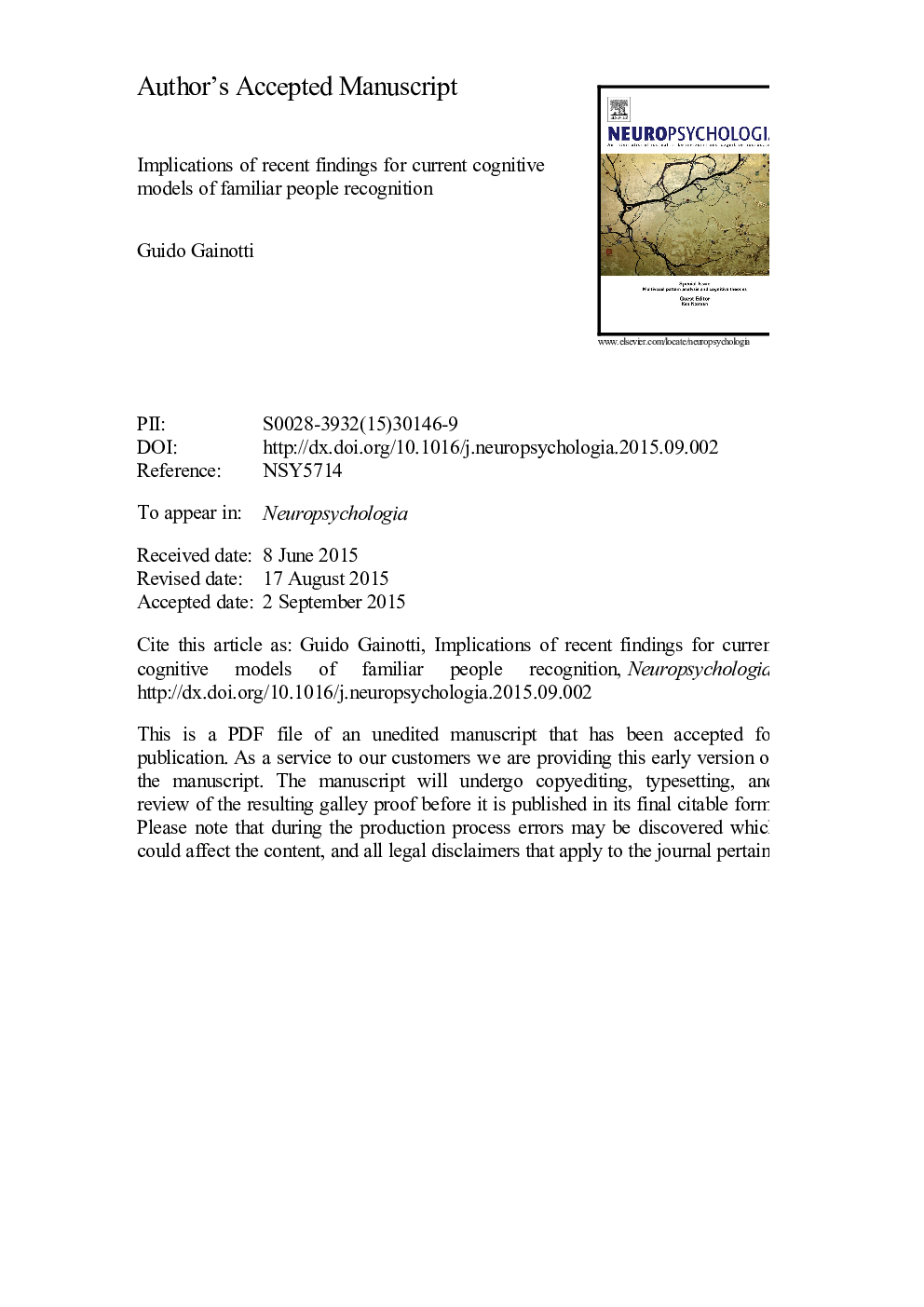| کد مقاله | کد نشریه | سال انتشار | مقاله انگلیسی | نسخه تمام متن |
|---|---|---|---|---|
| 7319608 | 1475576 | 2015 | 47 صفحه PDF | دانلود رایگان |
عنوان انگلیسی مقاله ISI
Implications of recent findings for current cognitive models of familiar people recognition
ترجمه فارسی عنوان
پیامدهای یافته های اخیر برای مدل های شناختی فعلی شناخت افراد آشنا
دانلود مقاله + سفارش ترجمه
دانلود مقاله ISI انگلیسی
رایگان برای ایرانیان
کلمات کلیدی
تشخیص افراد آشنا، مدل های شناختی، احساسات آشنایی، اطلاعات معنایی شخصی، عدم تقارن نیم کره،
موضوعات مرتبط
علوم زیستی و بیوفناوری
علم عصب شناسی
علوم اعصاب رفتاری
چکیده انگلیسی
The aim of the present survey was to review clinical and experimental data concerning the visual (face), auditory (voice) and verbal (name) channels through which familiar people are recognized, by contrasting these data with assumptions made by modular cognitive models of familiar people recognition. Particular attention was paid to the fact that visual (face), auditory (voice) and verbal (name) recognition modalities have different hemispheric representations and that these asymmetries have important implications for cognitive models which have not considered hemispheric differences as an important variable in familiar people recognition. Several lines of research have, indeed, shown that familiar faces and voices are mainly underpinned by the right hemisphere, whereas names are mostly subsumed by the left hemisphere. Furthermore, anatomo-clinical data have shown that familiarity judgements are not generated at the level of the Person Identity Nodes (PINs), as suggested by influential cognitive models, but at the level of the modality-specific recognition units, with a right hemisphere dominance in the generation of face and voice familiarity feelings. Additionally, clinical and experimental data have shown that PINs should not be considered as a simple gateway to a unitary semantic system, which stores information about people in an abstract and amodal format, but as structures involved in the storage and retrieval of person-specific information, preferentially represented in a sensory-motor format in the right hemisphere and in a language-mediated format in the left hemisphere. Finally, clinical and experimental data have shown that before the level of the person identity nodes (PINs) a cross-communication exists between the perceptual channels concerning faces and voices, but not between the latter and personal names. These data show that person-specific representations are mainly based on perceptual (face and voice) information in the right hemisphere and on verbal information in the left hemisphere.
ناشر
Database: Elsevier - ScienceDirect (ساینس دایرکت)
Journal: Neuropsychologia - Volume 77, October 2015, Pages 279-287
Journal: Neuropsychologia - Volume 77, October 2015, Pages 279-287
نویسندگان
Guido Gainotti,
